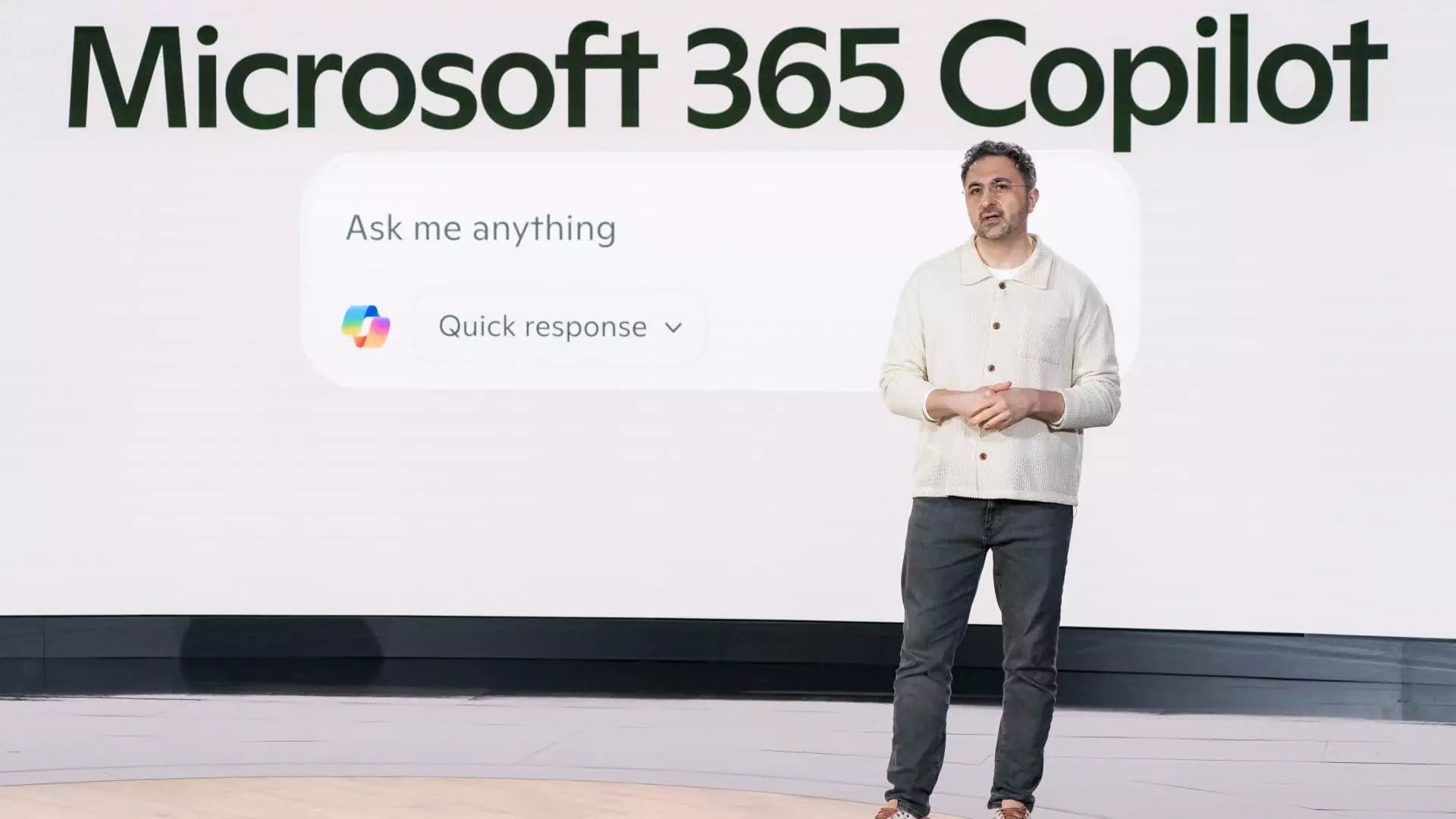In an age where artificial intelligence is evolving at a breakneck pace, major players like Microsoft are opting for a more calculated approach rather than diving headfirst into the heat of competition. Mustafa Suleyman, the CEO of AI at Microsoft, recently discussed the company’s distinct strategy, which prioritizes practicality over sheer ambition. Instead of racing to develop state-of-the-art AI models, Microsoft appears to be adopting a measured tactic, waiting for the dust to settle before entering the fray. This strategic delay allows the company to build more refined, cost-effective AI systems that meet specific needs rather than broad, generic applications.
Suleyman argues that being “three or six months behind” can be a sound business decision. This philosophy challenges the prevailing notion in tech circles that immediate deployment is essential. By observing the initial outcomes and learning from competitors’ successes and failures, Microsoft is better positioned to offer targeted solutions. They effectively harness insights from their rivals’ experiences, turning potential disadvantages into an asset. This tactical approach serves not only to lower costs but also to innovate with purpose and perspective.
Dependence on Partnerships
Part of Microsoft’s strategy hinges on establishing and nurturing relationships with emerging tech companies. The collaboration with OpenAI has proven to be monumental, fueling both parties’ growth and innovation. However, it also highlights a potential vulnerability. Despite significant investments—totally $13.75 billion—Microsoft faces the risk of OpenAI venturing into partnerships with rival firms, which could dilute the strength of their alliance. This is evident as OpenAI recently announced its collaboration with Oracle, a substantial move considering their historically exclusive relationship with Microsoft’s Azure cloud platform.
Such shifts prompt critical questions. Can reliance on external partnerships remain sustainable in an industry characterized by rapid evolution? While Microsoft’s investments in OpenAI position it well within the AI landscape, the company’s increasing move to classify OpenAI as a competitor underscores a growing tension. The delicate balance between collaboration and competition could lead to a scenario where Microsoft’s dependence turns into a liability.
Features that Enhance User Experience
Moreover, the modifications Microsoft is making to its products demonstrate a sharp focus on user-centric features rather than purely pushing the frontier of technology. The enhancement of Copilot to incorporate memory functionality, which allows it to remember critical details about users, signifies a commitment to creating a more intuitive and useful AI experience. This emphasis on user engagement sets Microsoft apart and appeals to a demographic that prioritizes usability and relevance over cutting-edge technology alone.
However, one must consider the implications of such enhancements. Are these updates merely band-aid solutions in a fast-paced world where the demand for groundbreaking innovation continues to grow? While enhancing user experience is crucial, there is also a risk of falling behind as others push the boundaries of AI technology. The tension between refining current products and the necessity to innovate is a delicate balance that Microsoft must navigate.
The Future: A Measured Path Ahead
As Microsoft forges ahead, Suleyman’s assertion about the necessity of self-sufficiency in AI technologies is worth examining. While partnerships with industry leaders like OpenAI are invaluable, the potential pitfalls of over-reliance can’t be ignored. The path toward building an independent AI future is fraught with challenges, especially in an environment where innovation is seamless and competitive.
This dual strategy—actively refining existing models while preparing for the long haul—illustrates a thoughtful, albeit cautious, approach to AI development. While some critics may perceive this strategy as a lack of ambition, others recognize the merit in patience and resourcefulness amid a turbulent technological landscape. Ultimately, Microsoft’s tactical positioning reflects an intelligent acknowledgment of the industry’s unpredictable nature, allowing them to navigate the rapidly shifting sands of AI with caution and clarity.

Leave a Reply